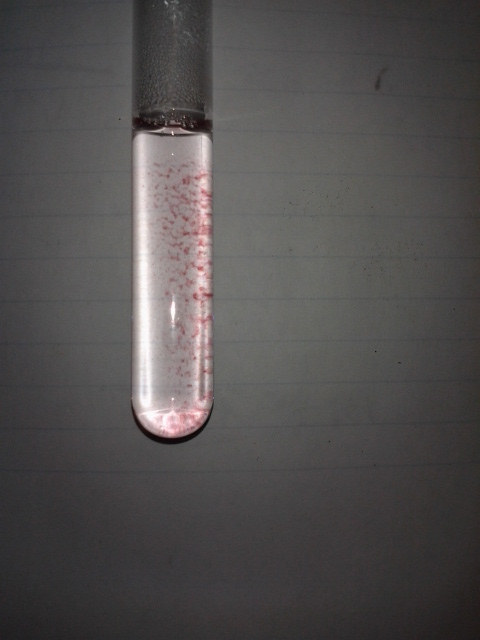User:Mary Mendoza/Notebook/CHEM 571 Experimental Biological Chemistry I/2012/10/24: Difference between revisions
From OpenWetWare
Jump to navigationJump to search
Mary Mendoza (talk | contribs) |
Mary Mendoza (talk | contribs) |
||
| Line 42: | Line 42: | ||
* The trend seen on the graph is accurate with the observations made from the physical state of the Au/BSA solutions. Mole ratio 60, 80, and 120 were the solutions that exhibited no fibers and had the consistent clear purple color. | * The trend seen on the graph is accurate with the observations made from the physical state of the Au/BSA solutions. Mole ratio 60, 80, and 120 were the solutions that exhibited no fibers and had the consistent clear purple color. | ||
* On the graph, mole ratios 60, 80, and 120 have high absorbances. According to Beer's law, absorbance is directly proportional to the molar absorptivity, path length, and concentration of the substance. Therefore, mole ratio 120 displaying the greatest absorbance peak has the greatest concentration of aqueous gold nanoparticles in solution. This is followed by mole ratio 80 and 60. | * On the graph, mole ratios 60, 80, and 120 have high absorbances. According to Beer's law, absorbance is directly proportional to the molar absorptivity, path length, and concentration of the substance. Therefore, mole ratio 120 displaying the greatest absorbance peak has the greatest concentration of aqueous gold nanoparticles in solution. This is followed by mole ratio 80 and 60. | ||
* Mole ratios 130 and 133 had fibers suspended in a clear and colorless solution. These solutions can be seen having some absorbance at the 510 nm region. | |||
<!-- ##### DO NOT edit below this line unless you know what you are doing. ##### --> | <!-- ##### DO NOT edit below this line unless you know what you are doing. ##### --> | ||
Revision as of 13:04, 27 October 2012
| <html><img src="/images/9/94/Report.png" border="0" /></html> Main project page <html><img src="/images/c/c3/Resultset_previous.png" border="0" /></html>Previous entry<html> </html>Next entry<html><img src="/images/5/5c/Resultset_next.png" border="0" /></html> | |
Transformation of BL21 cellsThe following procedures were conducted near the proximity of the Bunsen burner in accordance with aseptic techniques. The procedure is based from the laboratory Transformation protocol.
UV-Vis of Au/lysozyme solution
UV-Vis scans of Au/BSA
| |


